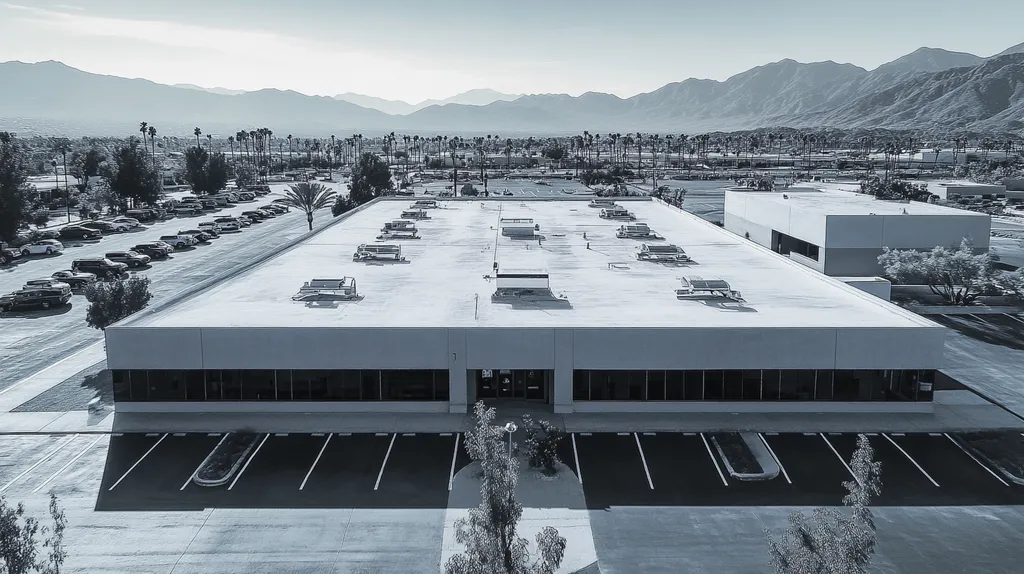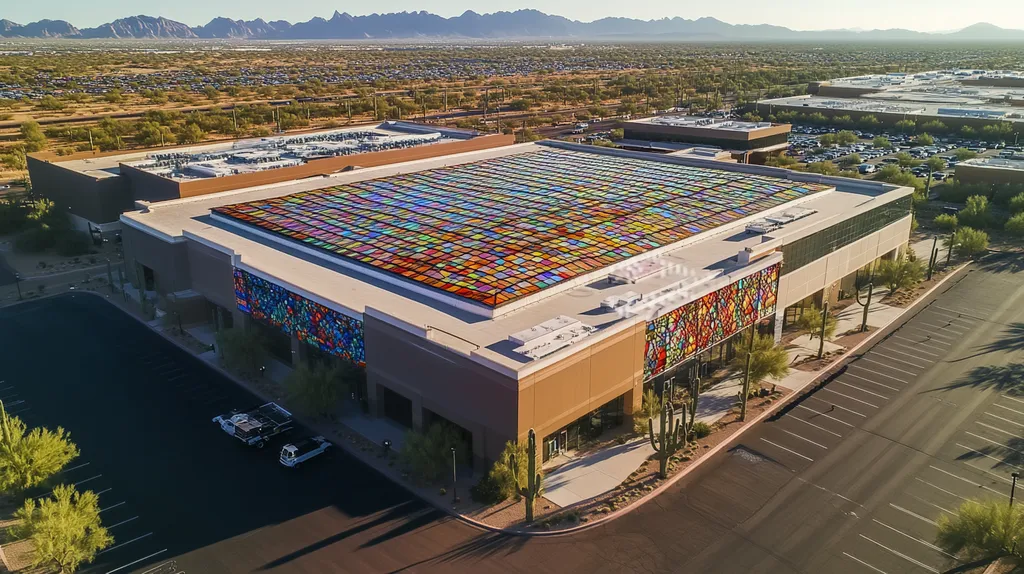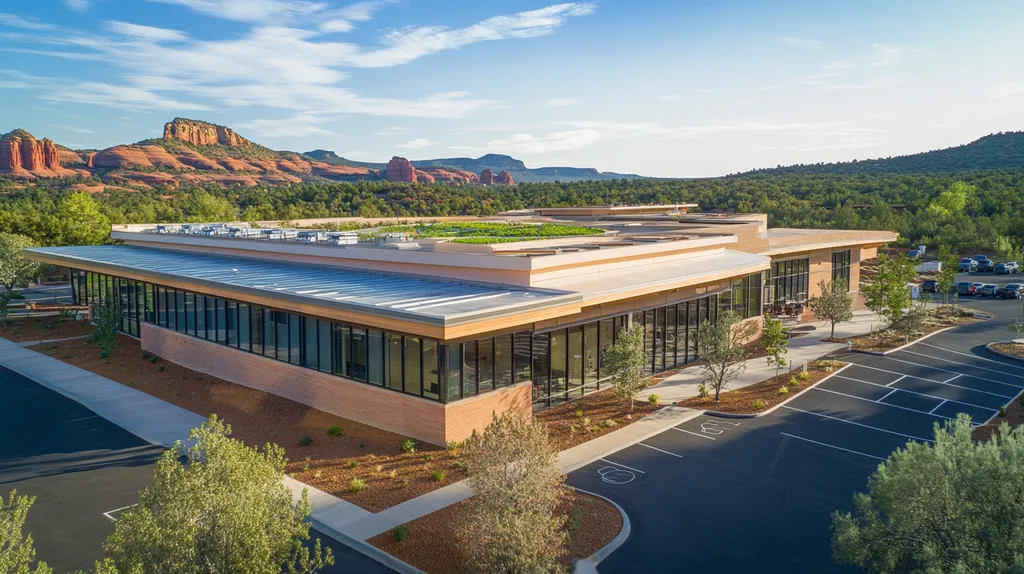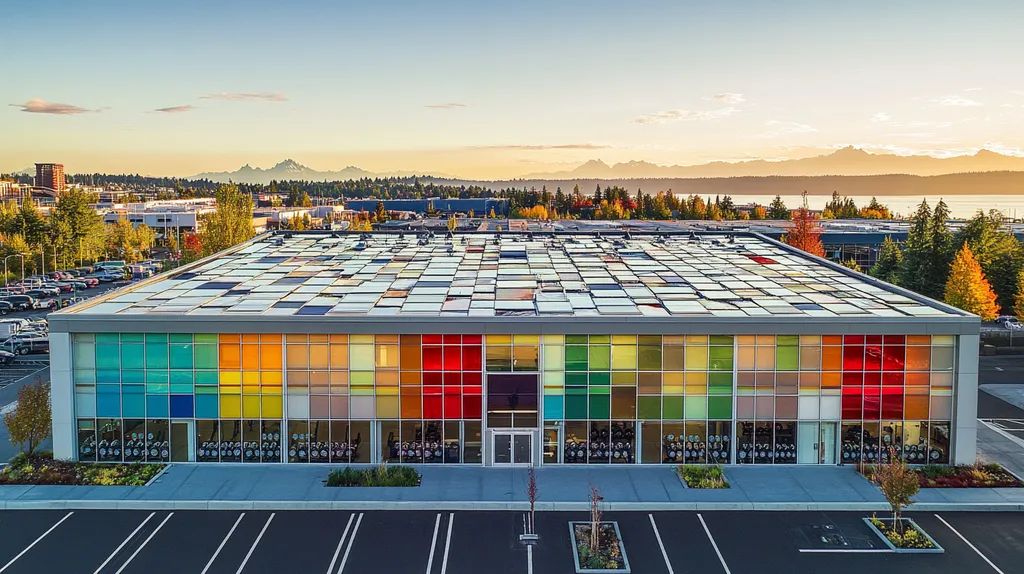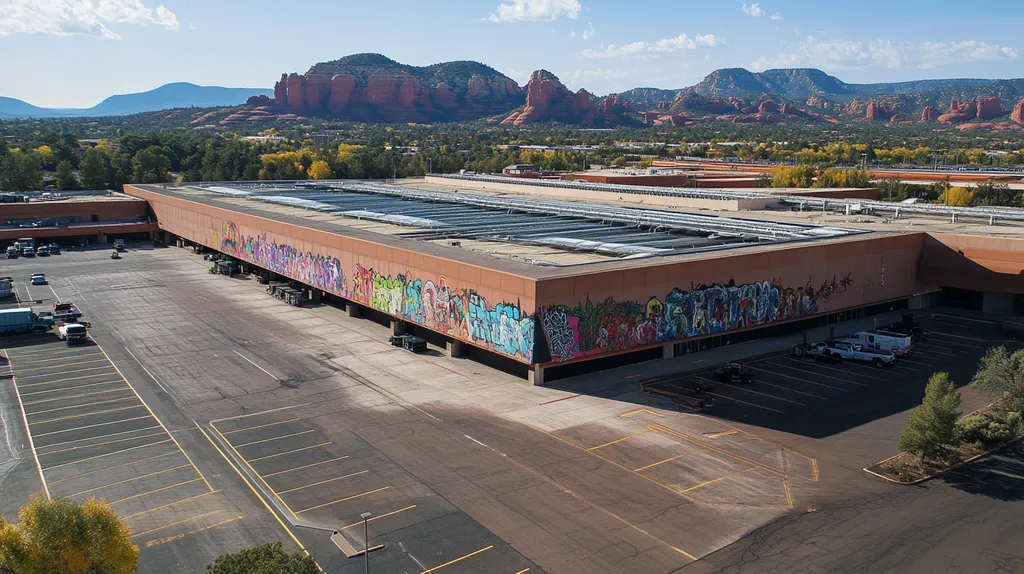Welcome to today’s Battle Royale featuring two roofing heavyweights: “Moisture Meters” in the east corner versus “Infrared Scanning” in the west!
Tonight’s showdown pits these contenders against each other across six punishing rounds designed to test every aspect of their performance for measuring moisture levels in commercial roof substrates.
At stake? Millions in potential costs, decades of building protection, and the critical performance demands of modern commercial and industrial facilities.
Our professional judging panel will evaluate each round on technical merit, real-world performance, and value delivery. After all six rounds, we’ll declare our ultimate champion.
Ladies and gentlemen, facility managers and building owners… it’s time to rumble!
ROUND 1: INITIAL COSTS & INSTALLATION
When measuring moisture in commercial roofs, choosing the wrong detection method can cost facility managers thousands in unnecessary equipment and labor. With roof replacement costs averaging $10-15 per square foot, accurate moisture detection becomes a critical first line of defense against premature failure.
Let’s examine how moisture meters and infrared scanning compare across three crucial categories: material expenses, installation complexity, and project timeline impact.
Material Expenses
The Tramex Roof and Wall Scanner represents the current standard for handheld moisture meters, offering dual operating modes and four sensitivity ranges for comprehensive moisture detection. This professional-grade equipment typically costs under $2,000, including accessories like a telescopic handle and carrying case. (source: Tramex Meters)
Basic moisture meters start even lower, around $300-500, making them accessible to facilities teams of any size. While some limitations exist with EPDM and certain rubber roofing materials, most commercial applications are well-served by these devices.
In contrast, professional-grade infrared scanning equipment starts at $6,000 and can exceed $15,000 for advanced systems. Additional costs include specialized software, calibration services, and training programs.
Given the substantial price difference and comparable detection capabilities, moisture meters claim a clear ADVANTAGE in material expenses.
Installation Complexity
Moisture meters excel in operational simplicity, requiring minimal training for basic proficiency. Most models feature intuitive interfaces with clear numerical readouts, allowing maintenance teams to begin testing immediately.
Setup typically involves selecting the appropriate sensitivity range and ensuring proper contact with the roof surface. Even complex scanning patterns can be mastered in a few hours of practice.
Infrared scanning demands significantly more expertise. Proper setup requires understanding thermal dynamics, environmental conditions, and potential interference sources. Calibration must account for varying roof materials and ambient temperatures.
The stark contrast in learning curves and setup requirements gives moisture meters another clear ADVANTAGE.
Project Timeline
Speed matters when assessing roof conditions, especially during emergency moisture investigations. Moisture meters allow immediate deployment and instant readings, enabling rapid decision-making during critical situations.
Multiple areas can be tested quickly, with results available on-site. This immediate feedback helps teams identify problem areas and adjust testing patterns in real-time.
Infrared scanning requires specific environmental conditions and often nighttime testing for optimal results. Post-processing and analysis of thermal images add further delays, potentially stretching simple assessments into multi-day projects.
The ability to conduct instant tests and obtain immediate results gives moisture meters the ADVANTAGE in project timeline efficiency.
ROUND 1 WINNER: Moisture Meters
ROUND 2: DURABILITY & LIFESPAN
When it comes to protecting multi-million dollar commercial properties, moisture detection accuracy can make or break a roof’s performance. With replacement costs skyrocketing past $15 per square foot, facility managers need detection methods that deliver reliable results year after year. The stakes are clear: choose wrong, and you might as well tape a “Welcome Water Damage!” sign to your building.
Equipment Longevity
Commercial moisture meters are built to withstand daily abuse. Their solid-state construction means fewer moving parts to break down, and most models can handle drops from reasonable heights without losing calibration.
However, these devices require regular recalibration to maintain accuracy. Contact points can wear down over time, especially when testing rough or abrasive surfaces, leading to decreased sensitivity and potential false readings.
Infrared cameras, while more delicate, typically maintain their accuracy longer between calibrations. Modern thermal imaging systems use sealed sensor arrays that resist environmental contamination and maintain precise readings for years.
With superior long-term stability and fewer maintenance requirements, infrared scanning claims the ADVANTAGE in equipment longevity.
Testing Reliability
Nuclear roof moisture testing has revolutionized accuracy standards by measuring hydrogen content within roofing materials, delivering precise moisture detection even in deep layers. This technology provides comprehensive moisture mapping that helps prevent major repairs before they’re needed. (source: Atlantic Leak)
Moisture meters struggle with consistent readings across varied materials. Temperature changes and surface contamination can throw off measurements, requiring multiple tests to confirm results.
Infrared scanning maintains reliability across diverse conditions and materials. Its non-contact approach eliminates wear-related accuracy drift, while advanced software compensates for environmental variables.
Given its superior consistency and advanced detection capabilities, infrared scanning takes the ADVANTAGE in testing reliability.
Long-Term Value
Moisture meters shine in frequent, targeted testing scenarios. Their low initial cost and simple operation make them ideal for routine maintenance checks and quick verification of problem areas.
However, their limited range and spot-testing nature mean potentially missing developing issues between test points. This can lead to expensive oversights and premature roof failure.
Infrared scanning delivers comprehensive coverage that catches problems early. While more expensive upfront, its ability to prevent major failures through early detection often pays for itself many times over.
The comprehensive protection and superior problem prevention gives infrared scanning the ADVANTAGE in long-term value.
ROUND 2 WINNER: Infrared Scanning
ROUND 3: PERFORMANCE FACTORS
When moisture infiltrates commercial roofing systems, detection speed and accuracy become critical factors in preventing catastrophic damage. With repair costs averaging thousands per incident, facility managers need reliable tools that deliver actionable results. Understanding how different moisture detection methods perform under real-world conditions can mean the difference between minor repairs and major replacements.
Accuracy
The Tramex Roof and Wall Scanner utilizes non-destructive impedance scanning technology to evaluate moisture conditions with precision, featuring dual operating modes and the ability to detect moisture up to 4 inches deep. This advanced capability ensures thorough assessment of both surface and subsurface conditions. (source: Tramex Meters)
Traditional moisture meters deliver consistent readings when properly calibrated, allowing teams to establish reliable baseline measurements. Their direct contact method minimizes environmental interference, providing dependable data points for decision-making.
Infrared scanning’s accuracy depends heavily on environmental conditions and operator interpretation. Temperature variations, surface conditions, and time of day can all impact reading reliability.
Given their superior consistency and depth capabilities, moisture meters claim the ADVANTAGE in accuracy.
Responsiveness
In emergency situations, rapid moisture detection can prevent extensive damage to roofing systems and interior spaces. Quick identification allows maintenance teams to address issues before they escalate into major failures.
Moisture meters excel in providing instant feedback, enabling immediate decision-making during critical assessments. Their portable nature allows rapid deployment across multiple test points.
Infrared scanning requires specific conditions and extended setup time for optimal results. Post-scan analysis further delays action on potential problems.
The ability to deliver immediate results gives moisture meters the ADVANTAGE in responsiveness.
Ease of Use
Simple operation ensures consistent testing protocols and reliable results across different operators. Complex equipment often leads to shortcuts and missed problem areas.
Moisture meters feature straightforward interfaces and clear numerical readings. Most maintenance staff can achieve proficiency after minimal training.
Infrared scanning demands specialized knowledge of thermal imaging principles and environmental factors. Interpreting results requires significant expertise and ongoing training.
The minimal learning curve and simple operation gives moisture meters the ADVANTAGE in ease of use.
ROUND 3 WINNER: Moisture Meters
ROUND 4: MAINTENANCE REQUIREMENTS
In commercial roofing, improper moisture detection maintenance can turn a minor leak into a six-figure catastrophe. With roof replacements costing upwards of $15 per square foot, facility managers can’t afford unreliable testing equipment. Understanding the maintenance demands of different detection methods becomes crucial when protecting millions in building assets.
Calibration Requirements
Moisture meters demand regular calibration to maintain accuracy, typically every 6-12 months depending on usage frequency. Most units feature built-in calibration checks that help technicians verify performance before each use.
Contact points require periodic cleaning and inspection to prevent false readings. Surface debris and wear can impact sensitivity, making routine maintenance essential for reliable results.
Infrared cameras need less frequent calibration but require more complex procedures when they do. Many systems demand factory recertification, leading to extended equipment downtime.
Given their simpler calibration process and shorter downtime, moisture meters claim the ADVANTAGE in calibration requirements.
Operational Maintenance
Nuclear roof moisture testing has revolutionized maintenance protocols by providing precise moisture mapping capabilities that help prevent unnecessary repairs. This advanced technology delivers accurate readings regardless of surface conditions, reducing maintenance-related false positives. (source: Atlantic Leak)
Moisture meters excel in operational simplicity, requiring basic cleaning and battery replacement. Their robust construction withstands typical worksite conditions with minimal impact on performance.
Infrared systems demand careful handling and storage to protect sensitive components. Environmental factors like dust and moisture can degrade image quality, necessitating frequent cleaning and protective measures.
The superior durability and minimal maintenance needs give moisture meters the ADVANTAGE in operational maintenance.
Skill Requirements
Effective moisture detection depends heavily on proper equipment maintenance and operation. Poor maintenance practices can compromise accuracy regardless of technology choice.
Moisture meters require basic technical skills for maintenance tasks. Most procedures can be performed by in-house maintenance staff after brief training.
Infrared scanning systems demand specialized knowledge for proper maintenance. Many facilities must rely on external technicians for routine upkeep, increasing both cost and complexity.
The ability to handle maintenance in-house gives moisture meters the ADVANTAGE in skill requirements.
ROUND 4 WINNER: Moisture Meters
ROUND 5: SUSTAINABILITY CREDENTIALS
As commercial buildings face mounting pressure to reduce environmental impact, choosing the right moisture detection method becomes critical for sustainable operations. With premature roof replacement generating up to 8 tons of landfill waste per 1,000 square feet, accurate moisture detection directly impacts both environmental stewardship and operational costs.
Modern facility managers must balance immediate detection needs against long-term sustainability goals while maintaining building performance. The right choice can extend roof life by decades while minimizing waste and energy consumption.
Environmental Impact
The Tramex Roof and Wall Scanner provides non-destructive moisture evaluation through advanced impedance scanning technology, allowing thorough assessment without damaging roofing materials. This precision technology enables detection up to 4 inches deep while preserving roof integrity. (source: Tramex Meters)
Standard moisture meters generally require minimal power consumption and generate no waste during normal operation. Their spot-checking approach helps target repairs precisely, reducing unnecessary material removal.
Infrared scanning equipment demands significant power for operation and often requires petroleum-based coolants for thermal sensors. The broad-area scanning approach can sometimes lead to over-remediation when thermal anomalies are misinterpreted as moisture issues.
Given their lower resource consumption and targeted repair approach, moisture meters claim the ADVANTAGE in environmental impact.
Energy Efficiency
Proper moisture detection plays a crucial role in maintaining building envelope performance. Wet insulation can lose up to 40% of its R-value, dramatically increasing HVAC energy consumption.
Moisture meters excel at pinpointing specific problem areas, allowing precise remediation that preserves existing insulation value. Their direct contact measurements provide clear data without environmental interference.
Infrared scanning requires significant energy for operation and often needs multiple passes to confirm findings. While effective at finding thermal anomalies, distinguishing between moisture and other heat variations can lead to unnecessary insulation replacement.
The superior efficiency in both operation and remediation guidance gives moisture meters the ADVANTAGE in energy efficiency.
Long-Term Viability
Sustainable roofing practices depend on detection methods that remain reliable throughout a roof’s lifecycle. Equipment longevity and consistent performance directly impact waste generation and resource consumption.
Moisture meters typically last 5-10 years with minimal maintenance, providing consistent readings throughout their service life. Their simple construction means fewer components to fail or require replacement.
Infrared cameras often need component upgrades or replacement every 3-5 years to maintain accuracy. Their complex electronics and sensitivity to environmental conditions can lead to premature obsolescence.
The extended service life and reduced replacement needs gives moisture meters the ADVANTAGE in long-term viability.
ROUND 5 WINNER: Moisture Meters
ROUND 6: SPECIALIZED APPLICATIONS
When detecting moisture in specialized commercial roofing applications, choosing the wrong testing method can turn a minor issue into a catastrophic failure. With specialized roofing systems costing upwards of $30 per square foot to replace, facility managers need detection methods that deliver precise, actionable results for unique challenges.
Multi-Layer Systems
Complex roofing assemblies demand detection methods capable of identifying moisture at various depths. Traditional spot-checking often misses trapped moisture between layers, leading to hidden deterioration and premature system failure.
Moisture meters struggle with consistent readings in multi-layer applications. Signal penetration becomes unreliable beyond the first few inches, potentially missing deeper moisture pockets.
Infrared scanning excels at revealing subsurface moisture patterns across multiple layers. Its non-invasive approach provides comprehensive moisture mapping without compromising system integrity.
The superior depth capabilities and system-wide coverage gives infrared scanning the ADVANTAGE in multi-layer applications.
High-Security Facilities
Secure facilities require moisture detection methods that maintain building security protocols. Testing equipment must meet strict guidelines while delivering accurate results under controlled conditions.
Moisture meters offer simple, discrete testing capabilities ideal for sensitive environments. Their basic electronic components pose minimal security concerns and require few special clearances.
Infrared systems often face restrictions due to their imaging capabilities and data storage features. Many facilities prohibit thermal cameras, limiting their effectiveness in secure locations.
The minimal security impact and straightforward operation gives moisture meters the ADVANTAGE in high-security applications.
Critical Systems Integration
Modern roofing often integrates with critical building systems like solar arrays and green roof installations. Moisture detection must work around these components without disrupting their operation.
Moisture meters provide targeted testing capabilities that work well around sensitive equipment. Their precise measurements help protect integrated systems from water damage.
Infrared scanning delivers comprehensive coverage while identifying moisture impacts on integrated components. Its broad view helps facility managers understand how moisture affects entire system performance.
The ability to evaluate both moisture conditions and system impacts gives infrared scanning the ADVANTAGE in critical systems integration.
ROUND 6 WINNER: Infrared Scanning
AND THE WINNER IS…
After six bruising rounds of technical warfare, we have our undisputed champion! With a dominant 4-2 victory, MOISTURE METERS claim the moisture detection crown!
This scrappy contender dominated through superior cost-effectiveness, operational simplicity, and sustainability credentials. Its knockout performance in rounds 1, 3, 4, and 5 showcased unmatched practicality for routine commercial roofing applications.
But don’t count Infrared Scanning out completely! This technical powerhouse proved its worth in specialized applications, particularly with multi-layer systems and critical infrastructure integration. When complex roofing assemblies demand comprehensive subsurface analysis, infrared scanning still packs a serious punch.
Remember folks, every building brings its own unique challenges to the ring. Local climate conditions, roofing materials, and facility requirements can all impact detection performance. While moisture meters claim today’s title, your specific situation may favor a different champion.
Always consult qualified roofing professionals who can evaluate your property’s individual needs and recommend the most effective moisture detection strategy.
In the high-stakes arena of commercial roofing, true victory comes not from blindly backing the champion, but from matching your facility’s specific requirements with the right technical contender. Choose wisely, building warriors!
FREQUENTLY ASKED QUESTIONS
Q. What are the costs for moisture meters in commercial roofs?
A. The cost of moisture meters for commercial roofs typically ranges from $300 to $2,000. These devices offer straightforward options for moisture detection without the hefty price tag associated with infrared scanning, making them budget-friendly and effective for facility managers.
Q. How durable are moisture meters for industrial roofs?
A. Moisture meters are designed for durability with solid-state construction. They can withstand daily wear and tear on job sites, but regular recalibration and maintenance are essential to ensure continued accuracy, preventing costly mistakes down the line.
Q. Are infrared scanners reliable for commercial roof moisture testing?
A. Infrared scanners are effective in detecting moisture but their reliability can fluctuate based on environmental factors. Proper training is essential for interpreting results accurately, as temperature and surface conditions can impact readings significantly.
Q. What maintenance do moisture meters require?
A. Moisture meters require regular calibration every 6-12 months, alongside periodic cleaning of contact points to maintain accuracy. Simple maintenance is crucial to ensure reliable operation and prevent false readings during assessments.
Q. Can moisture meters help with environmental sustainability in commercial roofs?
A. Yes! Moisture meters help reduce unnecessary waste by enabling precise targeting of repairs. Their non-invasive approach extends roof life, minimizing landfill contributions and supporting sustainable building practices, a win for both the wallet and the environment.
Q. How do moisture meters perform in high-security commercial roof applications?
A. Moisture meters are ideal for high-security applications due to their simple, discrete operation. With minimal electronic components, they do not raise significant security concerns, making them suitable for sensitive environments that require moisture detection.
Q. Can infrared scanning be trusted for specialized industrial roofing systems?
A. Infrared scanning can be beneficial for specialized systems by providing comprehensive moisture mapping. However, accurate results depend on expert interpretation and proper setup. Its non-invasive method makes it valuable for various roofing complexities compared to simpler technologies.


